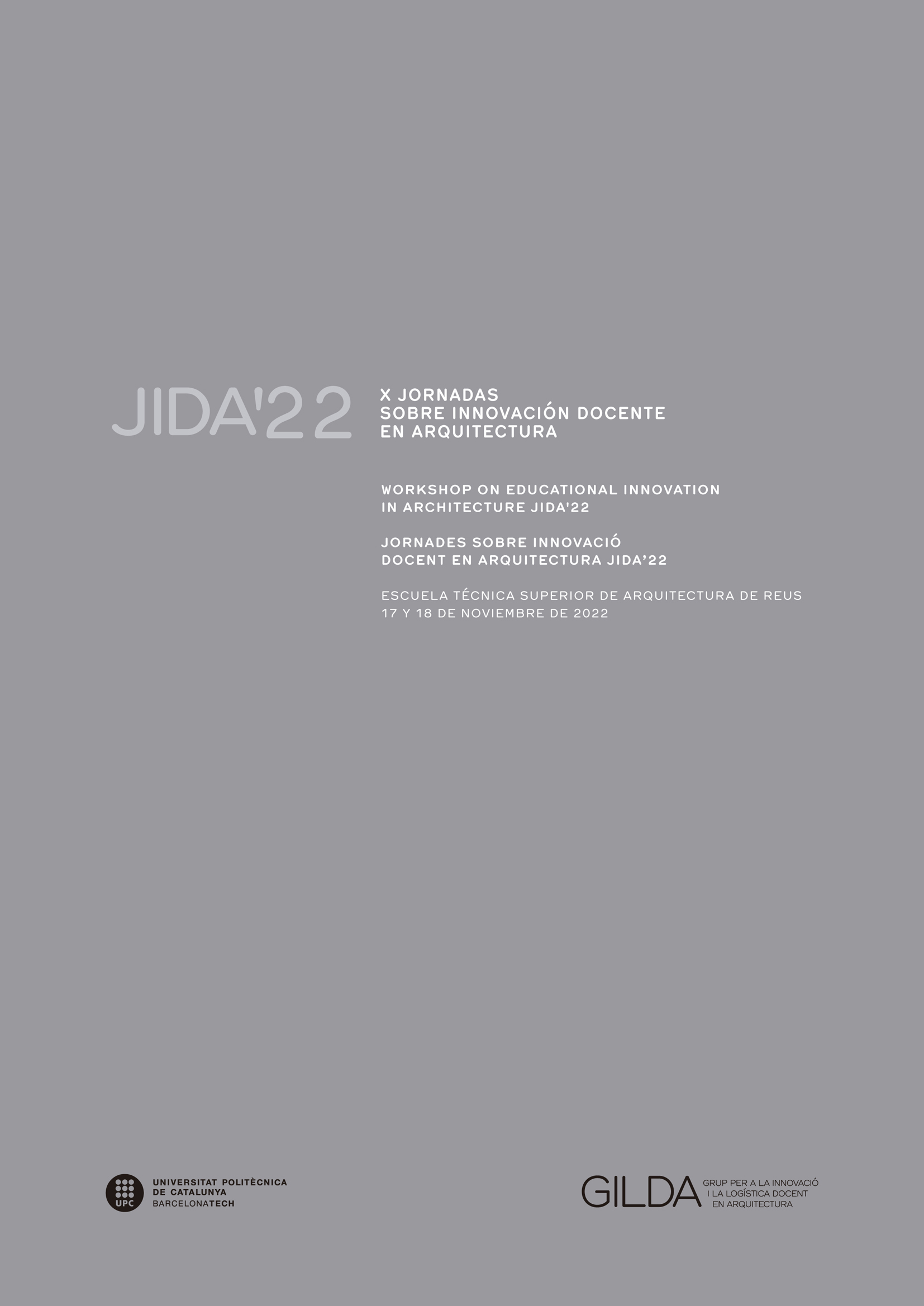Hacia adentro
DOI:
https://doi.org/10.5821/jida.2022.11564Palabras clave:
interior, domesticidad , gran dimensión, imagen, Proyectos ArquitectónicosResumen
El interior es un concepto nuclear de la arquitectura, y a su vez, constituye el ámbito más frágil de la misma, un ámbito que puede alterarse y adaptarse a los cambios estilísticos, temporales, sociales, climáticos, económicos y de usos. El interior se vuelve un campo de expansión disciplinar para explorar tanto factores puramente compositivos como condiciones termodinámicas que activen nuevas ecologías a través de configuraciones formales y materiales.
Citas
ABALOS, I. (2014). Interiores, el talón de Aquiles de la modernidad. Madrid: Ministerio de Fomento.
CACHE, B. (1995). Earth Moves: The Furnishing of Territories (Writing Architecture). Cambridge, MA: The MIT Press.
COLOMINAS, B. (1994). Privacy and Publicity, Modern Architecture as mass media. Cambridge: MA: MIT, publishers.
EVANS, R. (2000). The projective cast. Cambridge; Ma: MIT Press.
FERNÁNDEZ, J. (2022). Manifiesto de interiores. Barcelona: Puente Editores.
KOOLHAAS, R.M., y OMA. (1995). S,M,L,XL. New York: The Monacelli Press.
MORETTI, L. (1952). Strutture e sequenze di spazi. Milán: Spazio.
RICE, C. (2007). The emergence of the Interior. New York: Routledge.
WALKER, E. (2016). Una conversación con Kersten Geers y DAvid Van Severen. Barcelona: Croquis, 185, 6.






















